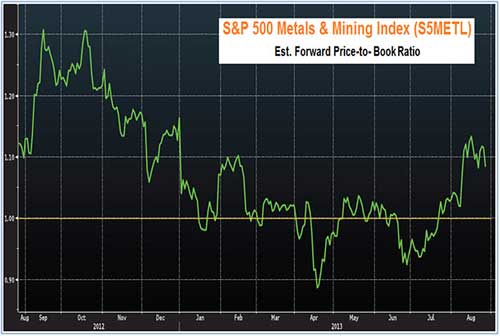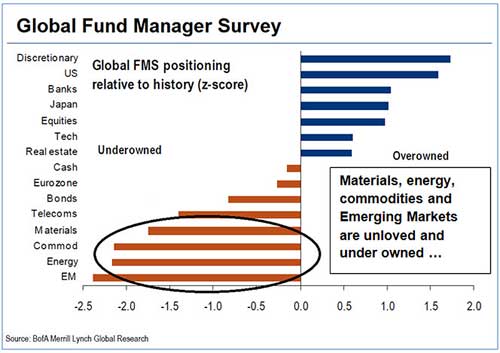 |
Next week starts the riskiest month of the year for investors. Stocks have historically performed worse in September — down about 1 percent on average over the past 60 years — than any other time of year, according to the Stock Trader’s Almanac.
If that weren’t concerning enough, investors have another reason to be on guard: A potential “tapering tantrum” in markets.
The next Federal Reserve policy meeting takes place Sept. 17-18, when the central bank will consider whether to start winding down its $85 billion-a-month bond-buying program known as quantitative easing (QE).
That tapering, a word made infamous by the Fed, has been making headlines since May, when Chairman Ben Bernanke first hinted policy makers might curtail QE depending on the economic outlook. Any mention of that word by Fed officials since then has resulted in turbulent trading for stocks, bonds, commodities and the dollar.
The consensus view is that the Fed will announce a slowdown in the pace of QE purchases at next month’s meeting. But no matter what the Fed says, volatility is already on the rise and trends are beginning to shift beneath the surface of the market.
For instance, the S&P 500 Homebuilding Index, a sector I wrote about previously in Money and Markets, went from a top performer in the first quarter (up 13.5 percent) to the second-worst performer since July 1 (down 12.1 percent).
 |
| Bargain seekers love sales but, on Wall Street, that logic often fails. |
Another dramatic reversal of fortune, but in the opposite direction, is happening in metals and mining stocks. They declined 3.2 percent in the first quarter but have surged 14.1 percent since the end of June.
Investors should pay attention to these shifts in sector leadership, especially when they occur at turning points for the broader market, which may be the case now. That’s because the correlation between movements of individual stocks, sectors and the market in general often change over time. Yesterday’s winners can easily become tomorrow’s losers, or vice versa. And being in the right stocks and sectors at the right time can make all the difference in performance.
What follows are some of the shifting trends to keep an eye on.
First, when I search for stocks and sectors with market-leadership potential, I like to start by screening for those that are undervalued and, perhaps, out of favor. Having both factors working in your favor is best.
Everyone likes to find a bargain. When shopping, the idea is to keep an eye out for high-quality merchandise when it goes on sale. Bargain seekers love sales but, on Wall Street, that logic often fails. When stocks “go on sale,” investors run away, shunning the best bargains.
That’s because bargains are usually accompanied by bad headlines, inducing pessimism and making it tough to pull the trigger, even for dedicated contrarian investors.
After a 13 percent rally this year, it’s not easy to find bargains in the S&P 500. Stocks aren’t wildly overvalued, but they’re not dirt-cheap either. Still, pockets of value do exist, if you take a closer look at basic valuation metrics.
Take the metals and mining sector. Mining shares have suffered as gold has fallen 20 percent in 2013 while copper has tumbled 9 percent.
As a result, mining shares are trading at bargain values today: Less than book value and at a substantial discount relative to the S&P 500.
In fact, if the sector were to rise to only average valuation levels based on price-to-book, there would be 42 percent upside potential.
Still, simply identifying undervalued stocks and sectors alone isn’t enough.
After all, undervalued and out-of-favor shares can stay that way a long time. In the same way, overvalued sectors can continue to move higher, becoming even more overpriced.
So the second important step in this process is to identify what appears to be a well-defined change of trend for the better. Sometimes sentiment can be a guide. When a sector is so out of favor that you see nothing but a steady flow of negative news, and everyone on CNBC says “sell,” that can actually be a positive sign.
Sure enough, as seen in the graph above, big institutional investors have little exposure to commodities and materials stocks in their portfolios now, according to a recent global fund manager survey from Merrill Lynch. In other words, hedge fund managers and other big investors have already unloaded their basic material stocks — there’s nobody left to sell.
That means if an unexpected positive catalyst emerges — perhaps a sharp rebound in gold and copper prices — a huge amount of money on the sidelines could rush back into this unloved and undervalued sector, pushing mining stocks much higher in the process.
In fact, the process may already be under way.
Since July 1, the S&P 500 has gained just 3.1 percent, while the S&P 500 Metals & Mining sector is up 14.1 percent. Even as the stock market is losing steam, mining shares are gaining momentum. Investors see bargains in these stocks and money is starting to flow back into the sector.
Once that correction is over, metals and mining shares could be one sector that emerges as a new market leader. For a sector that’s on my watch list of potential buy candidates, please visit Money and Markets’ Facebook page. Please share that information with your friends and make sure to leave me a comment.
Good investing,
Mike Burnick


 Mike Burnick, with 30 years of professional investment experience, is the Executive Director for The Edelson Institute, where he is the editor of Real Wealth Report, Gold Mining Millionaire, and E-Wave Trader. Mike has been a Registered Investment Adviser and portfolio manager responsible for the day-to-day operations of a mutual fund. He also served as Director of Research for Weiss Capital Management, where he assisted with trading and asset-allocation responsibilities for a $5 million ETF portfolio.
Mike Burnick, with 30 years of professional investment experience, is the Executive Director for The Edelson Institute, where he is the editor of Real Wealth Report, Gold Mining Millionaire, and E-Wave Trader. Mike has been a Registered Investment Adviser and portfolio manager responsible for the day-to-day operations of a mutual fund. He also served as Director of Research for Weiss Capital Management, where he assisted with trading and asset-allocation responsibilities for a $5 million ETF portfolio.